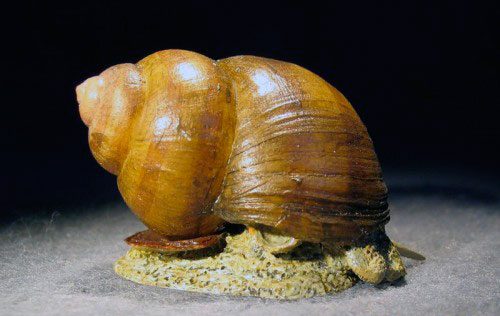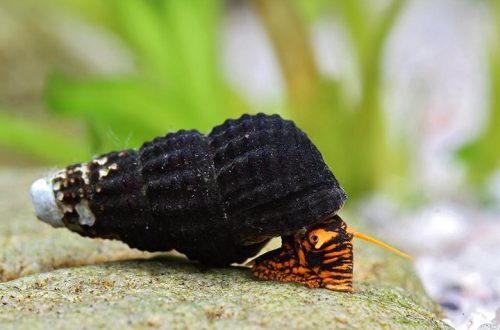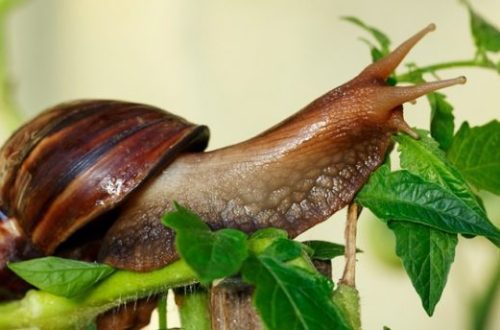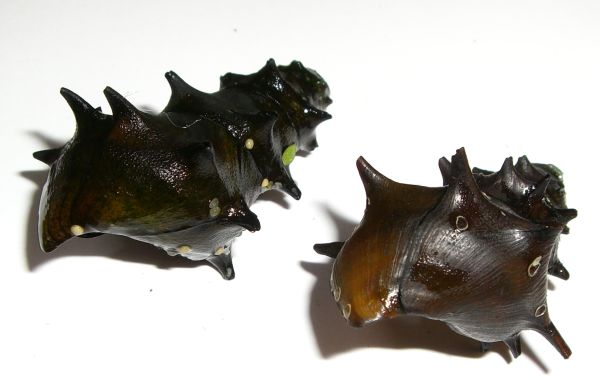
Pagoda: sulod, paghulagway, paghuwad, litrato

Snail Pagoda
This mollusk with a bizarre shell was first described in 1847 by the British naturalist John Gould. Due to its unusual and beautiful appearance, the Pagoda snail is very popular with aquarists. In nature, it is found within a limited geographical area, in other words, it belongs to endemics.
Lives in freshwater rivers with clean and oxygenated water on the border of Myanmar and Thailand. Prefers rocky areas with fast currents and waterfalls. Whole families can settle on heated stones. Almost never found in lakes. Description A distinctive feature of this snail, which gave it its name, is the original conical shape of the shell, similar to a pagoda (multi-level tower).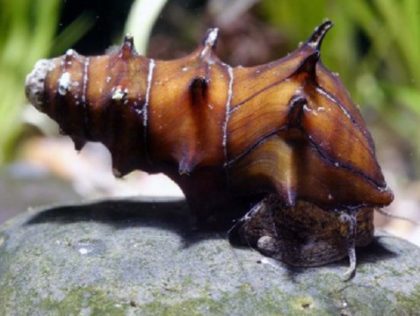
The color of the shell varies from yellow to various shades of brown. On the shell there are 5-8 curls (they are also called ribs), covered with large hollow spikes. The body of this creature is yellow or gray, dotted with orange specks and casts with mother-of-pearl. The organs of touch are the tentacles located on the head. The maximum size of males is 5,5 cm. Males and females do not have external sexual characteristics; it is impossible to visually distinguish them. In an aquarium they can live up to five years.
Habitat: is endemic, that is, it exists in a limited area in the tributaries of the Moei River between Myanmar and Thailand. The pagoda lives only in flowing, very clean and oxygenated water. It mainly chooses the stones of swift rivers and waterfalls as a place of residence, and is rarely found in lakes.
Pagpasanay
Content
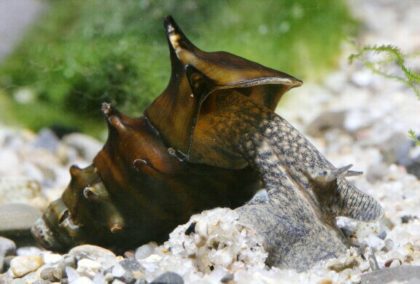
Well complement the menu of this beauty tablets for catfish, chopped pieces of spinach, carrots, cucumbers, green beans, pears. Feed must be given daily. If the Pagoda lacks food, it will start eating the leaves of plants in the aquarium, this is a signal that the snail is hungry. The better the mollusk eats, the faster it grows.
Interesting Facts About the Pagoda Snail
- The size of representatives of this species directly depends on the conditions of keeping and feeding;
- Pagoda snails have a fairly peaceful nature, they can be kept in flocks;
- Pagodas take care of their relatives – they share food and even help each other clean the sink. In addition, they are caring parents.





